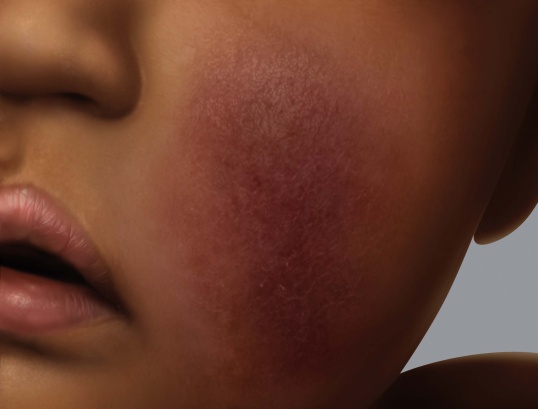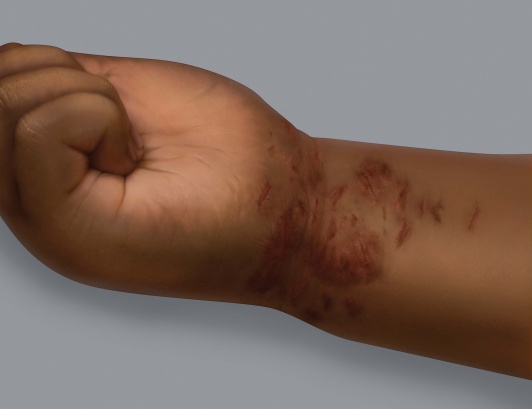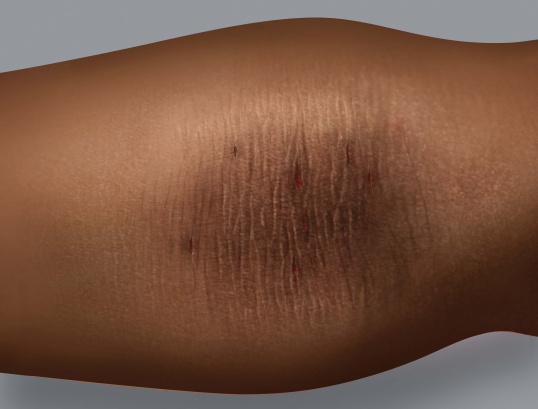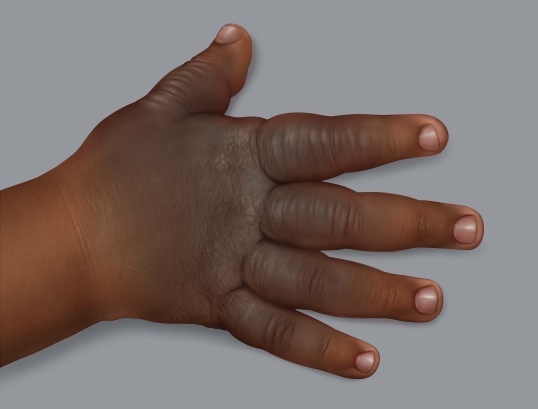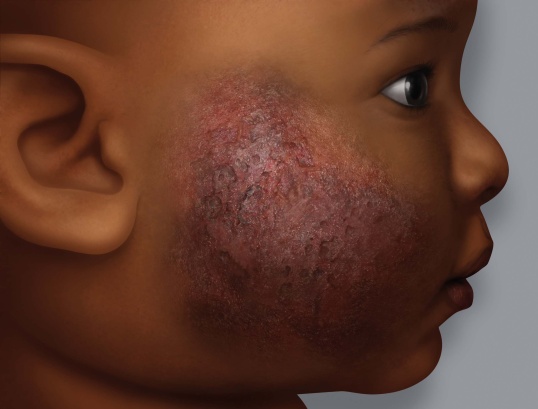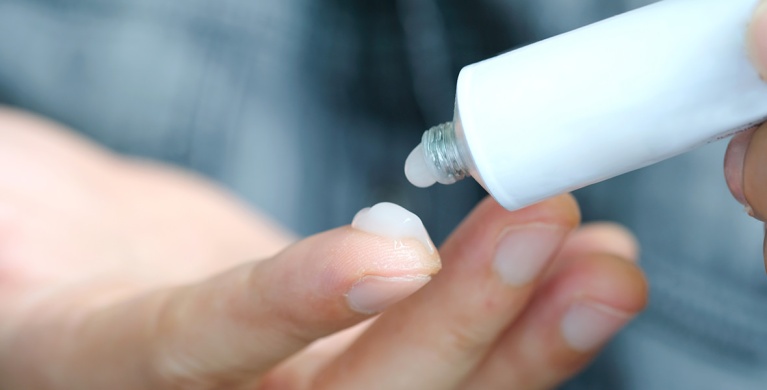

Eczema on dark skin

On skin of color, eczema rashes are less visible, which may make diagnosis more difficult. Inflammation may also leave lighter marks and must, therefore, be treated as soon as possible.
Eczema affects all skin colors
Eczema is a common disease affecting mostly children, and it does not discriminate against skin color. Light skin and dark skin tones are equally affected.
Similar symptoms appear in dark skin as in light skin:
- Changes in skin color on the eczema patch
- Swelling (edema)
- Itching
- Oozing
- Thickening of the skin (lichenification)
- Marks from scratching (excoriation)
In atopic eczema, which presents in flare-ups, skin also feels dry and tight, even in periods of remission. Intense itching can impede sleep and cause children to become irritable.
On dark skin: redness is less visible and lichenification is dark
On light skin, eczema patches are more visible due to the stark contrast. They may be more difficult to see on dark skin. If skin is lightly pigmented, and in adequate lighting, patches are visible but less noticeable on black skin.
Impact on pigmentation
Scratching often leads to hyperpigmentation
Inflammation and scratching stimulate pigmentation. Simply scratching the skin, even without eczema, can cause brown patches, for example on the back. Eczema lichenification—the thickening of the skin due to scratching—often appears hyperpigmented on dark skin.
This hyperpigmentation is temporary and is gradually reduced with treatment.
We also observe on dark skin a particular form of lichenification comprised of, for example, isolated spots (papules).
Eczema sometimes leads to depigmentation
In some cases, inflammation causes not hyperpigmentation but rather depigmentation, which can be light or totally white. This depigmentation most often appears in children, on the face, and is more visible against dark skin. It is temporary and goes away with treatment.
In some cases, this depigmentation is more intense and long-lasting. Prolonged itching can sometimes produce full depigmentation (vitiligo), particularly on the legs. This is rare, however, and appears only in cases of severe atopic dermatitis in adults.
Should you be worried about the effects of topical corticosteroids on pigmentation?
Cortisone creams (topical corticosteroids) used for the anti-inflammatory action against eczema offer another benefit in this case: they limit hyperpigmentation.
However, you should not be concerned about using a topical corticosteroid because of its potential depigmentation effect. Depriving a child of an effective treatment exposes them to the consequences of eczema and chronic scratching, and thus to pigmentation disorders, which are even more visible in children with dark skin. If treatment is properly administered (one daily application, stopped once patches have disappeared), the risk of depigmentation or hyperpigmentation is limited.
<<<<<<Habits to learn for school
